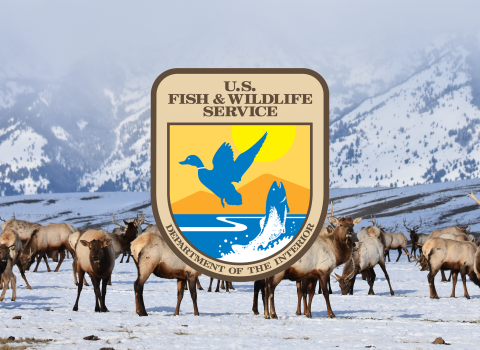The U.S. Fish and Wildlife Service is releasing a draft revision of the Red Wolf Recovery Plan to guide recovery efforts for “America’s red wolf.” The original recovery plan was approved in 1982 and was revised in 1984 and 1990.
“Conserving our nation’s biodiversity and stemming the tide of the growing extinction crisis before species are too far gone is a priority of the Biden-Harris administration,” said Department of the Interior Assistant Secretary for Fish and Wildlife and Parks Shannon Estenoz. “This updated recovery plan will help promote and support the conservation and survival of the red wolf and ensure these critically endangered canids endure in the wild for future generations.”
“This plan underscores the Service’s commitment to working with others to conserve the red wolf – one of the most endangered canids in the world – and finding solutions that address the needs of the species and surrounding communities,” said Service Director Martha Williams. “Successful recovery will require collaborative efforts with all who are involved and interested in red wolf recovery. These efforts will include direct and transparent engagement with our partners, landowners and other stakeholders to facilitate a coexistence between people and red wolves.”
Today’s draft revision of the recovery plan incorporates the current status of the species and new information gathered over the last three decades. The revised plan includes actions to improve resiliency, redundancy and representation in the population and establishes goals for adequate numbers, adequate habitat, genetic diversity, and multiple resilient populations within the red wolf’s historic range. The plan also prioritizes collaborative conservation to engage stakeholders in management to mitigate threats to the species on the basis of shared understanding and expectations for red wolf recovery.
The only distinct canid species native to North America, red wolves once inhabited a vast region from southern New York to central Texas, including the entire Southeastern United States. By the 1970s, the species had been driven to near extinction due to human persecution and habitat loss. The species was placed on the endangered species list in 1973, the same year in which the Service began developing a captive breeding program to enable future reintroductions to the wild. The first reintroductions occurred at Alligator River National Wildlife Refuge in eastern North Carolina in 1987, establishing the eastern North Carolina Red Wolf Population area. This effort was the first time a large carnivore had been declared extinct in the wild and then reintroduced in the United States and became a model for several subsequent reintroduction efforts.
The revised red wolf recovery plan provides measurable and objective criteria against which progress towards recovery of the species can be tracked over time. The plan uses the best available science to set goals for improving the status of the species, with the ultimate goal of recovering the species to the point that protections under the ESA are no longer needed. Recovery plans are non-regulatory documents that provide guidance on how best to help recover species. The recovery plan was drafted by the Red Wolf Recovery Team, a collaborative partnership with federal and state agencies, tribal representatives, county government, academia, zoos/conservation centers, non-profit organizations, non-governmental organizations, and landowners.
The Service is working toward a future where red wolves coexist with humans in multiple wild, free and viable populations across the historic range where threats are managed through conservation activities, alignment of conservation policy, and public trust and community engagement. Collaborative conservation is foundational to the success of the recovery of America’s red wolf and the Service will continue to strive to align our work with the needs of communities and stakeholders involved in red wolf recovery.
The Service encourages the public, federal and state agencies, tribes, and other stakeholders to review the draft revision of the recovery plan and provide comments. The Service will publish a final revised recovery plan for the red wolf by the court-ordered date of February 28, 2023. The public can review and download the draft revised recovery plan at the following Service websites: https://ecos.fws.gov/ecp/species/37 ; https://www.fws.gov/program/recovery/recovery-plans ; and https://www.fws.gov/project/red-wolf-recovery-program. Comments may be submitted on this draft revised recovery plan by one of the methods below. Comments will be accepted for a period of 30 days, through October 28, 2022.
U.S. Mail: Emily Weller, Coordinator, Red Wolf Recovery Program, U.S. Fish and Wildlife Service, 200 Dulles Drive, Lafayette, LA 70506; or
Email: redwolf_comments@fws.gov; please put “Comment on Draft Recovery Plan” in the subject line.
To learn more about “America’s red wolf”, please visit our website and social media sites below:
https://www.fws.gov/project/red-wolf-recovery-program
https://www.facebook.com/redwolfrecoveryprogram
The U.S. Fish and Wildlife Service works with others to conserve, protect, and enhance fish, wildlife, plants, and their habitats for the continuing benefit of the American people. For more information on our work and the people who make it happen, visit http://www.fws.gov. Connect with our Facebook page at www.facebook.com/usfwssoutheast, follow our tweets at www.twitter.com/usfwssoutheast, watch our YouTube Channel at http://www.youtube.com/usfws and download photos from our Flickr page at http://www.flickr.com/photos/usfwssoutheast.


